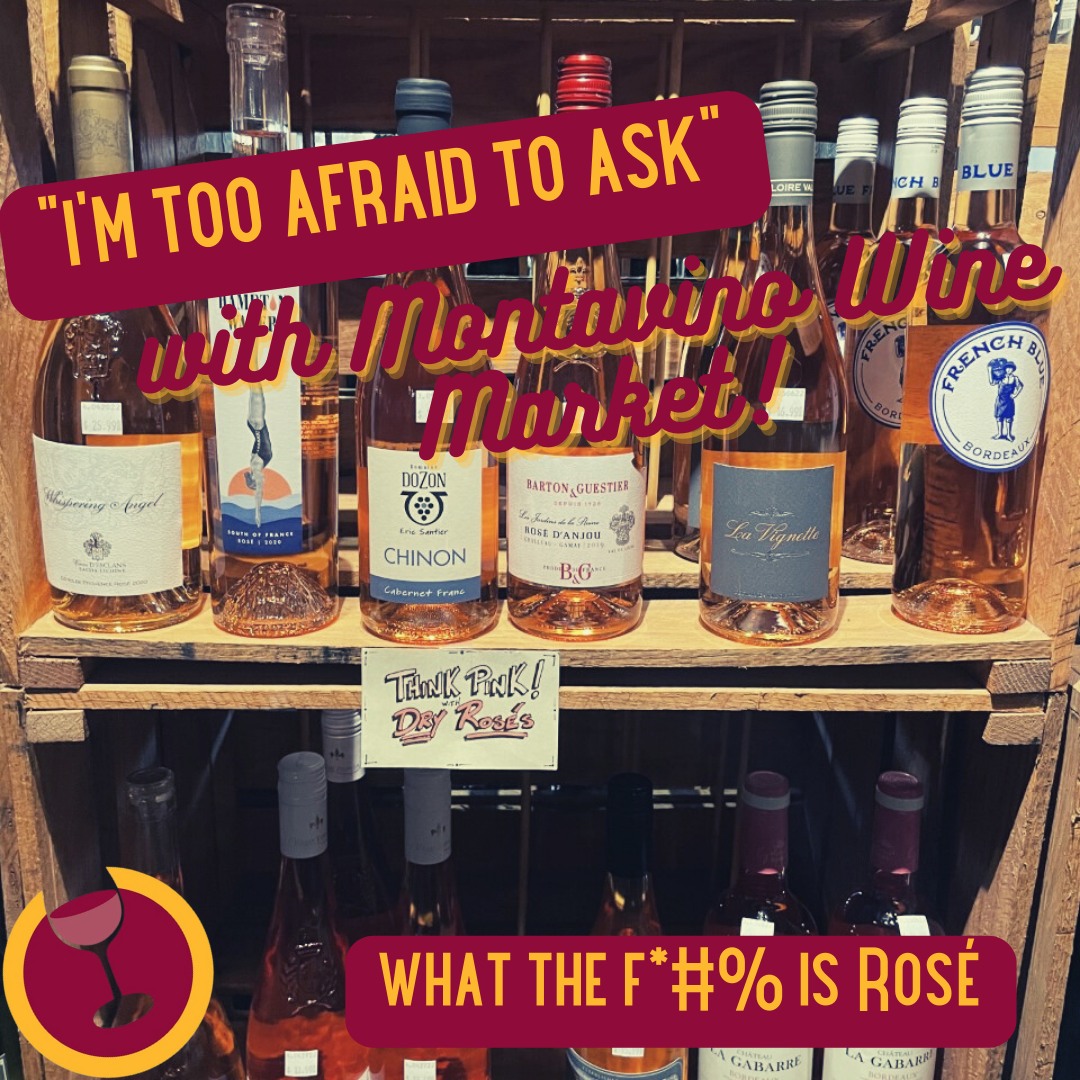
Let’s Talk Rosé:
Rosé is not a grape or any particular mix of grape varietals. It is named quite simply in honor of its rosy-pink color, which is achieved via the fermentation process. They can be blended with any red varietals you are familiar with. These wines are typically dry, but there are some sweet ones out there. (White Zinfandel for instance, is the most famous sweet rosé in the world, made from Zinfandel grapes.)
Rosé is made in similar fashion to red wines, but it ferments with the grape skins for a shorter time, leaving a lighter color. Essentially, there are two basic processes winemakers may use. In the first, the vintner presses red grapes immediately after harvest- this will yield a pale pink color. In the second, the winemaker can smash the grapes and let them sit in contact with the skins before separating the pink juice byproduct from the skins. Of course, alternatively a few rosés are made by simply blending white and red wine, but these are rarely of good quality.
Darker colored rosés tend to be more robust with more body, while paler ones tend have more complex aromas and a lingering finish. However, this is not a rule; the color does not necessarily correlate to the taste and body. Winemakers also produce sparkling rosé, which is a fun way to spice up your summer drinking. Sparkling rosés will be called “Brut Rosé” (Or “rosé cava” if it is Spanish- cava means brut means bubbly).
In buying rosés, the sweet spot of price point generally falls between $10-20. Store rosé wine in a cool, dry place away from heat until you are ready to open it. Store the bottle horizontally to keep the cork moist (this prevents the wine from spoiling). Do not store rosé in the refrigerator until after opening. It is best served chilled and enjoyed young.
So glad we could clear this one up. And to think- you were #TooAfraidToAsk !




